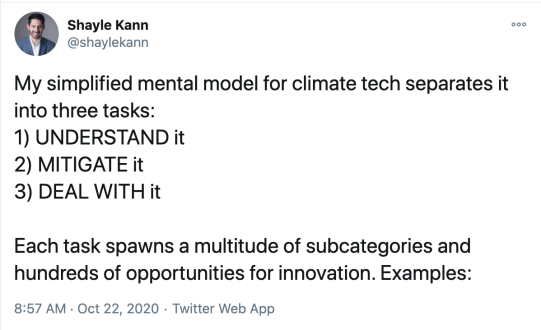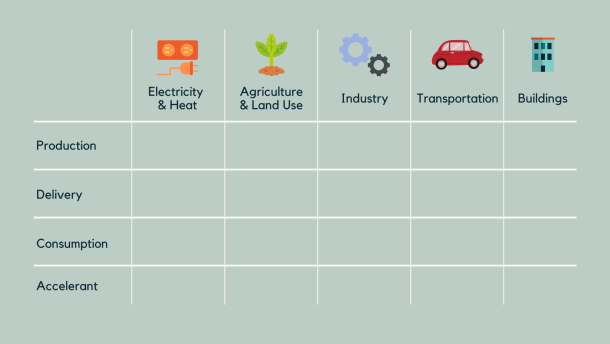
🌎 NY Climate Week debrief
Takeaways from five days of hallway and main-stage conversations at NYCW
Shayle Kann, Managing Director at Energy Impact Partners, has (very helpfully) broken down his mental model and capital allocation approach for climate tech into 1) Understand 2) Mitigate 3) Deal.

Climate tech is in its early stages, and the capital pouring in is still figuring out how to approach wide-ranging opportunities in this space. Shayle Kann, Managing Director at Energy Impact Partners, has (very helpfully) broken down his mental model and capital allocation approach for climate tech into 1) Understand 2) Mitigate 3) Deal.
1) Understand it
Before taking steps to mitigate or adapt to climate change, we first need to gather information and generate insights about our planet and how it changes from emissions. Shayle outlines the below subcategories focused on understanding climate change and its impacts. We listed a few examples of technologies within each sector (some of which we’ve featured):
2) Mitigate it
The second task, which is really the core of climate tech (and therefore should receive the lion’s share of climate capital allocation), is mitigation. This is by far the hardest to define and segment, as GHGs are emitted at all stages of the value chain within the five essential industries that contribute 86% of emissions. Shayle proposes the table below to classify mitigation solutions, arranged by industry on the top and value chain steps on the left.

We can apply this framework in Transportation to the Electric Vehicle value chain:
Sometimes one company has the ability to fit within multiple steps along the value chain. Tesla, in this example, has made a tremendous effort to vertically integrate from production to consumption. Value chains within different sectors can also be heavily dependent on one another (e.g., electricity and heat supplies the energy for EVs) and may even lead to decarbonization feedback loops (e.g, renewables supply clean electricity, which fuels non-emitting EVs, which then act as energy storage units for more reliable electricity production).
3) Deal with it
For climate problems that are past the point of mitigation, we need tools which can deal with or adapt to them (see our coverage on adaptation and wildfires). This is the area of climate tech that may unfortunately grow over time as our planet reckons with the emissions already released into the air.
Interested in more content like this? Subscribe to our weekly newsletter on Climate Tech below!

Takeaways from five days of hallway and main-stage conversations at NYCW

What ~300 exits over 3 years show about funding today's climate tech cohort

Fewer dollars, more climate innovation in 2022 climate tech market report